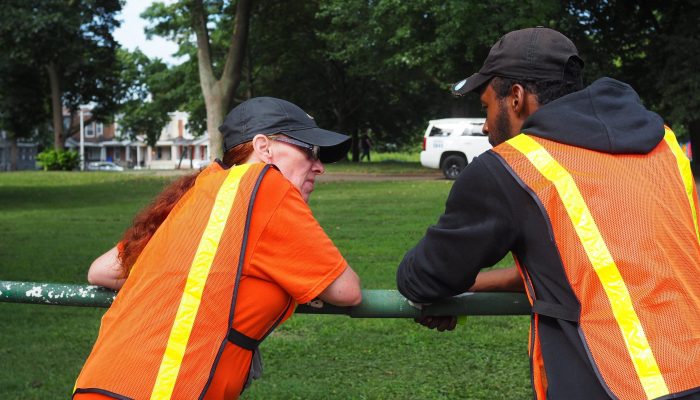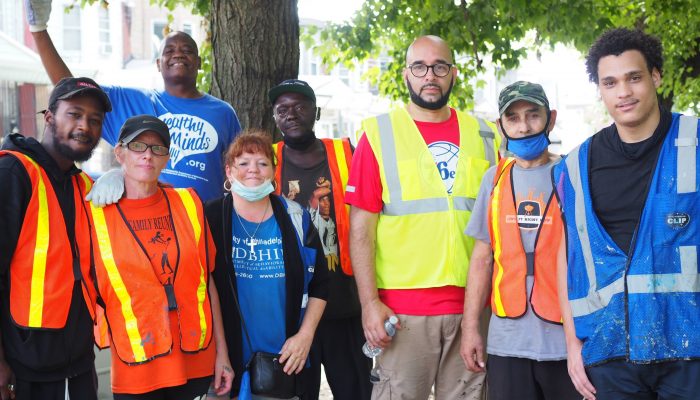This blog post was written by Gabe Halperin-Goldstein, Opioid Response VISTA
Photo credit: Alexis Capestany, Program Manager
If there is one thing that the Same Day Pay program has taught us, it is that employment does not have to look any one way. Designed in partnership with the Scattergood Foundation, Barra Foundation, Mural Arts, Community Life Improvement Program (CLIP), and the City’s Community Services Managing Director’s Office, the Same Day Pay Program provides a unique model for people experiencing financial insecurity to earn wages and connect to social services.
Same Day Pay in Philadelphia
In the Fall of 2019, Mural Arts hosted the original Same Day Pay project in Philadelphia, called Color Me Back. This program hired participants to paint a mural in SEPTA’s Suburban Station. Since then, the use of the Same Day Pay model in Philadelphia has expanded under the oversight of First Step Staffing, a non-profit working to reduce barriers to employment.
The Community Life Improvement Program (CLIP) used a Same Day Pay model as part of the Resilience Project in Kensington. In the Fall of 2020, both Color Me Back and CLIP have returned for round two of Same Day Pay.

Meeting People Where They Are
The Same Day Pay model is simple: you work a day; you get your pay. The CLIP model consists of half homeless and half neighborhood residents. For those experiencing homelessness and/or a substance use disorder, it can be challenging to find employment that suits their needs. Standard aspects of most jobs, such as having a bank account, working set hours, and submitting a resume may not be possible, no matter how much that person wants to be employed. This makes it hard to get a job, let alone hold it down.
By focusing on the basics, the Same Day Pay model reduces barriers to employment. After signing up, all the participants need to do is show up for their slots. At the end of their shift, they get paid for their work.
Color Me Back set the precedent of paying Same Day Pay participants more than a living wage (in round one, participants were paid $50 for each three-hour shift). Participants are paid with cash so that anyone can do the job, no matter their banking or documentation status.
Some programs have used a lottery system to recruit people daily, while others have recruited cohorts of up to two weeks. Either way, the core of the model is the same.
More Than A Job
The Same Day Pay model offers participants more than just a job. The program was designed with a trauma-informed approach so that participants feel support not just in their pockets, but also for their health.
Participants work alongside program staff and peer support specialists, who engage them in professional development activities and support their connection to social services, such as housing supports, benefits access, and physical, mental, and behavioral health providers. The referrals are also provided to residents in the program, such as housing, taxes, utility support, and more.

